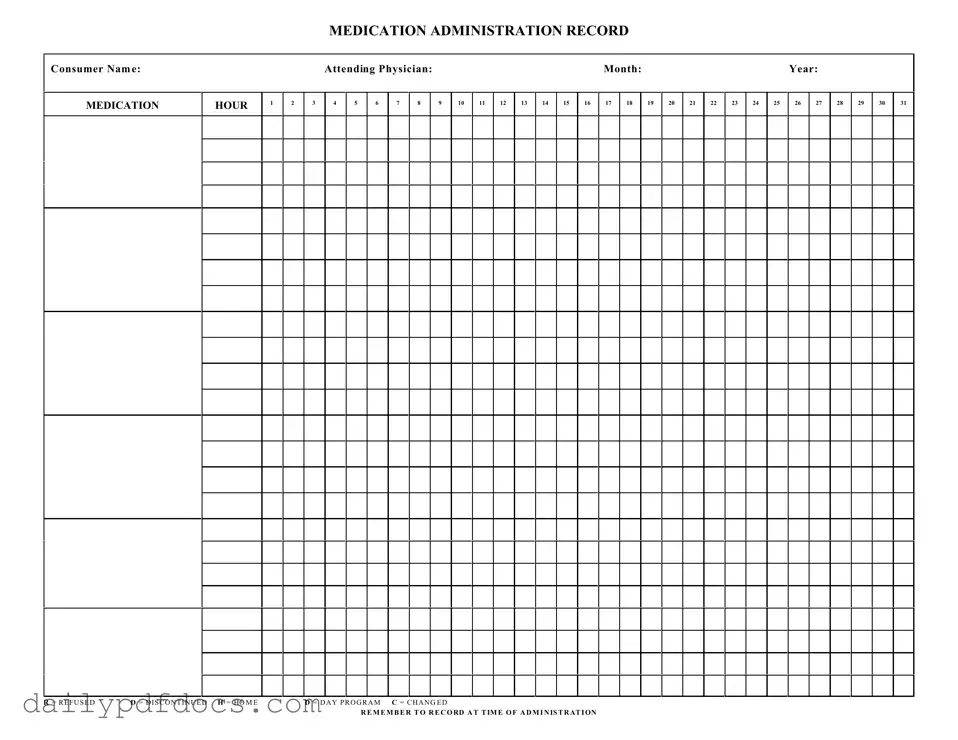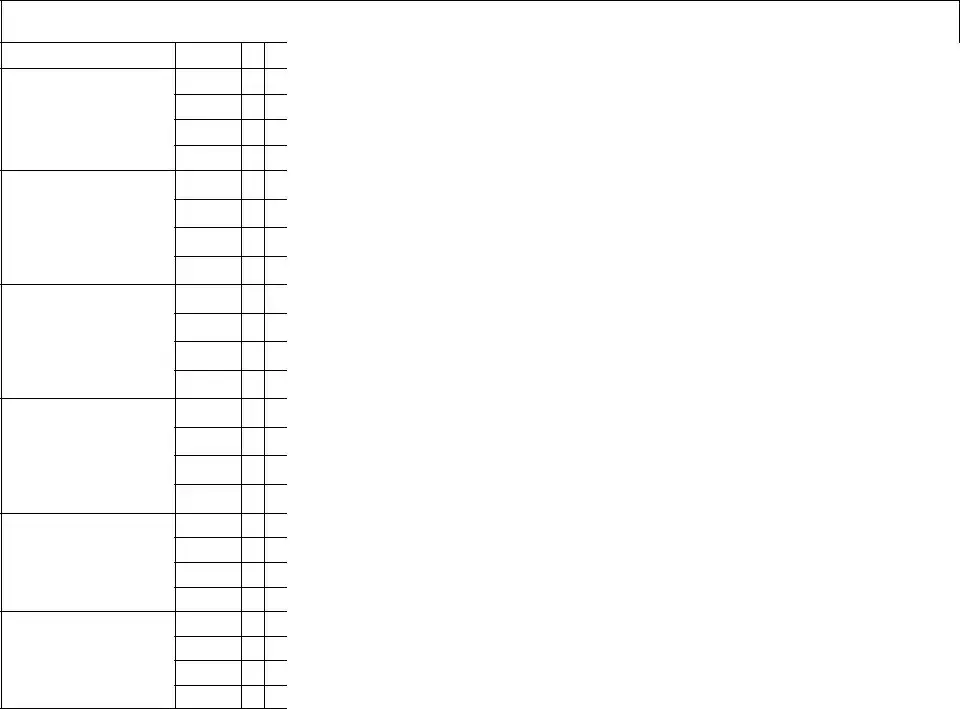What is a Medication Administration Record Sheet?
The Medication Administration Record Sheet is a document used to track the administration of medications to individuals. It helps ensure that medications are given at the correct times and in the appropriate dosages. This record is essential for maintaining accurate medical histories and for communicating with healthcare providers.
Who should use the Medication Administration Record Sheet?
This form is typically used by caregivers, healthcare professionals, and family members responsible for administering medications to individuals. It is particularly important in settings such as group homes, assisted living facilities, and day programs where multiple medications may be given to various consumers.
What information is required on the form?
Essential information includes the consumer's name, the attending physician's name, the month and year of administration, and a detailed schedule for medication administration. Each hour of the day is listed, allowing caregivers to mark when medications are given or if they were refused or discontinued.
How should medications be recorded on the sheet?
When administering medication, caregivers should record the time of administration directly on the form. If a medication is refused, discontinued, or changed, caregivers should use the designated codes (R for Refused, D for Discontinued, and C for Changed) to indicate these actions. This ensures accurate documentation of medication management.
Why is it important to keep this record up to date?
Keeping the Medication Administration Record Sheet up to date is crucial for several reasons. It provides a clear history of what medications have been administered, helps prevent medication errors, and ensures that healthcare providers have accurate information for making treatment decisions. Regular updates also assist in monitoring the consumer's response to medications.
What should be done if a mistake is made on the form?
If a mistake occurs on the Medication Administration Record Sheet, it is important to correct it promptly. Cross out the incorrect entry with a single line, and initial the correction to indicate who made the change. This maintains a clear record while showing that an error was acknowledged and corrected.
Where can I find additional resources or support regarding this form?
Additional resources regarding the Medication Administration Record Sheet can often be found through healthcare providers, local health departments, or online medical resources. Caregivers may also seek guidance from training programs focused on medication management and administration.

